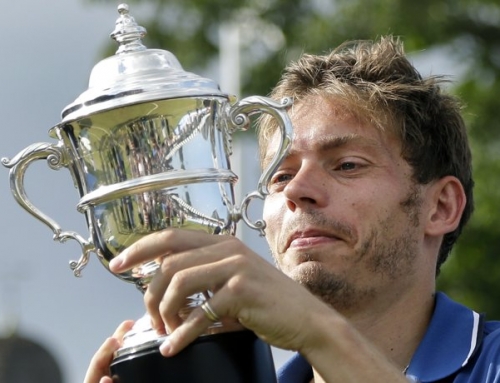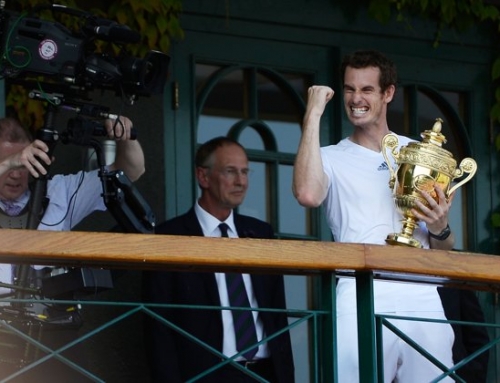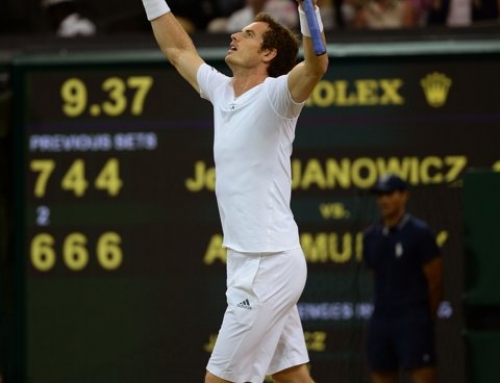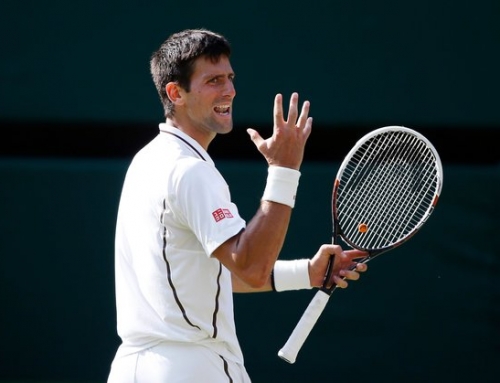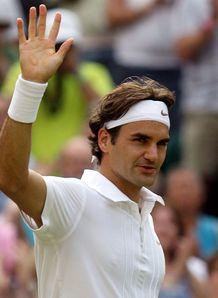 Roger prefers playing players he’s played a long time. There was a time that a handful of players gave Roger trouble. Lleyton Hewitt, David Nalbandian, and, yes, even Arnaud Clement. Federer overcame many of his nemesis by 2004 when he started becoming the Roger Federer of today. You have to credit Arnaud Clement, at 32 years of age, for his resourcefulness on tour.
Roger prefers playing players he’s played a long time. There was a time that a handful of players gave Roger trouble. Lleyton Hewitt, David Nalbandian, and, yes, even Arnaud Clement. Federer overcame many of his nemesis by 2004 when he started becoming the Roger Federer of today. You have to credit Arnaud Clement, at 32 years of age, for his resourcefulness on tour.
For a long time, Clement and Santoro held the title for the longest match, a 2004 first round match at the French Open, which lasted 6 hours, 33 minutes. Santoro won the match and continued to have a long career by today’s standards, playing until he was 35. Of course, the Clement-Santoro match was ecliped by the Isner-Mahut match, Mahut being yet another Frenchman with a penchant for long matches. Perhaps only fittingly, Clement teamed up with Mahut this French Open, as the crown of one losing marathoner was passed to another.
Clement once had his chance at a Slam when he made it to the finals of Australian Open back in 2001. These were the days where players came to Australia a bit unprepared and more unknowns made it to the final. Agassi won the lion’s share of his Slams in Australia, and one was over Clement. Clement would not have his best chance until 2008 when a friendly draw put him against Rainer Schuettler, another Australian Open finalist that lost to Agassi. Fate gave that match to Schuettler who gave a game but ultimately futile effort against Nadal.
Clement’s resilience has been remarkable, but the pirate Frenchman, who often wears a bandanna around his head and wrap around sunglasses, is a player of a different era, using his wile to keep him relevant in today’s game. Alas, unlike Falla, who was talking shots on the rise and pounding it, nor the lower ranked, Bozoljac, who hits with two hands on both sides and has a big serve, Clement doesn’t have much in his game that can really threaten Roger, and furthermore, Roger has immense confidence playing a guy he’s beaten so many times before.
So, the 6-2, 6-4, 6-2 beatdown was not surprising. For Federer, it was the kind of easygoing match he was looking for, which was surprising given the relative anonymity of both his first round players. Federer can at least say those opponents were hitting well. Federer knew how much Clement could do, and handled him deftly.
Head-to-head is a pretty good predictor, but obviously, it’s only just that, a prediction. If Roger Federer has beaten you 15 times in a row, then he’s likely to beat you a 16th time too. But players like Lleyton Hewitt, former Slam champions and former number 1, still have a competitive fire in them and they still try find ways to beat you, even after years of futility.
Hewitt’s win loss record against Monfils was in Monfils’s favor, but only by a slim 2-1 record. Hewitt hadn’t beaten Monfils since 2004, but when you play someone that infrequently, it almost doesn’t matter. Hewitt had never played Monfils on grass and his grasscourt record was better than Monfils. Monfils reminds me a bit of Yannick Noah. For as big as Noah was, he didn’t have the hardest serve, nor the biggest groundstrokes, nor was he the best server. He was a superb athlete, but it goes to show you that tennis is not just athletics: skills count too.
Hewitt was able to move Monfils around and Monfils seemed content to flip spinny shots without much pace. Monfils had chances to win the second set tiebreak but when he couldn’t close the deal, Hewitt did the job and beat Monfils in straight sets: 6-3, 7-6(9), 6-4.
Jurgen Melzer, who surprised the tennis world by making the semifinals of the French, with upsets of David Ferrer and Novak Djokovic, was relieved, finally, that he could get past the 4th round of a tournament. For a player of his age and his top-30 ranking, he had never made it deep in a major, and that was starting to be an embarrassment. Melzer seems to have taken the confidence from making a deep run in the French and applying it to Wimbledon where he beat Feliciano Lopez in four sets in a battle of lefties: 4-6, 6-3, 6-2, 6-4.
Yen-Hsun Lu, one of the harder working players mired in the lower ranks, made the most of his friendly draw by beating German, Florian Mayer, 6-4, 6-4, 2-1. Mayer retired in the third set.
Showing that head-to-head doesn’t matter to him, Paul-Henri Mathieu beat Mikhail Youzhny in five sets. 6-4, 2-6, 2-6, 6-3, 6-4. The last set was particularly surprising since Mathieu had a 3-0 lead and then only won one more game. Youzhny had a 5-1 record, but couldn’t finish the job.
Djokovic had one of his easiest matches yet, winning 6-2, 6-4, 6-4. The score should have been more lopsided as Djokovic had opportunities to break elsewhere. Djokovic says his return game is not where it should be, but so far, he’s making it through the draw, and that’s what counts.
Berdych was made to work very hard against Denis Istomin, needing 5 sets to beat the player from Uzbekistan. Final score: 6-7(1), 7-6(5), 6-7(8), 6-3, 6-4.
Roddick was made to work some for his 7-5, 6-7(5), 6-3, 6-3 win over Philipp Kohlschreiber. He will face Yen-Hsun Lu in the fourth round. He should be good to the quarters.
Hanescu has a 2 sets to 1 lead over Brands, all sets in tiebreaks so far.
From the top half of the draw, Federer will play Melzer. Given Melzer is older than Federer, it’s surprising the two have never met. Federer has to like this draw, but lefties give him a bit of trouble. Berdych will take on the winner of Brands-Hanescu and will probably be favored. Both appear to be big hitters.
Djokovic will play Hewitt. Hewitt may be slightly favored since it’s unclear where Djokovic’s game is. Hewitt plays a steady baseline game, and will probably give Djokovic his toughest match. Both were a bit unlucky to draw one another. Roddick, if he gets past Lu, would take the winner of Djokovic-Hewitt. He has a positive record against Djokovic, and beat him in 5 sets last year at Wimbledon. Either way, Roddick will have a tough route to win Wimbledon after the next round.



